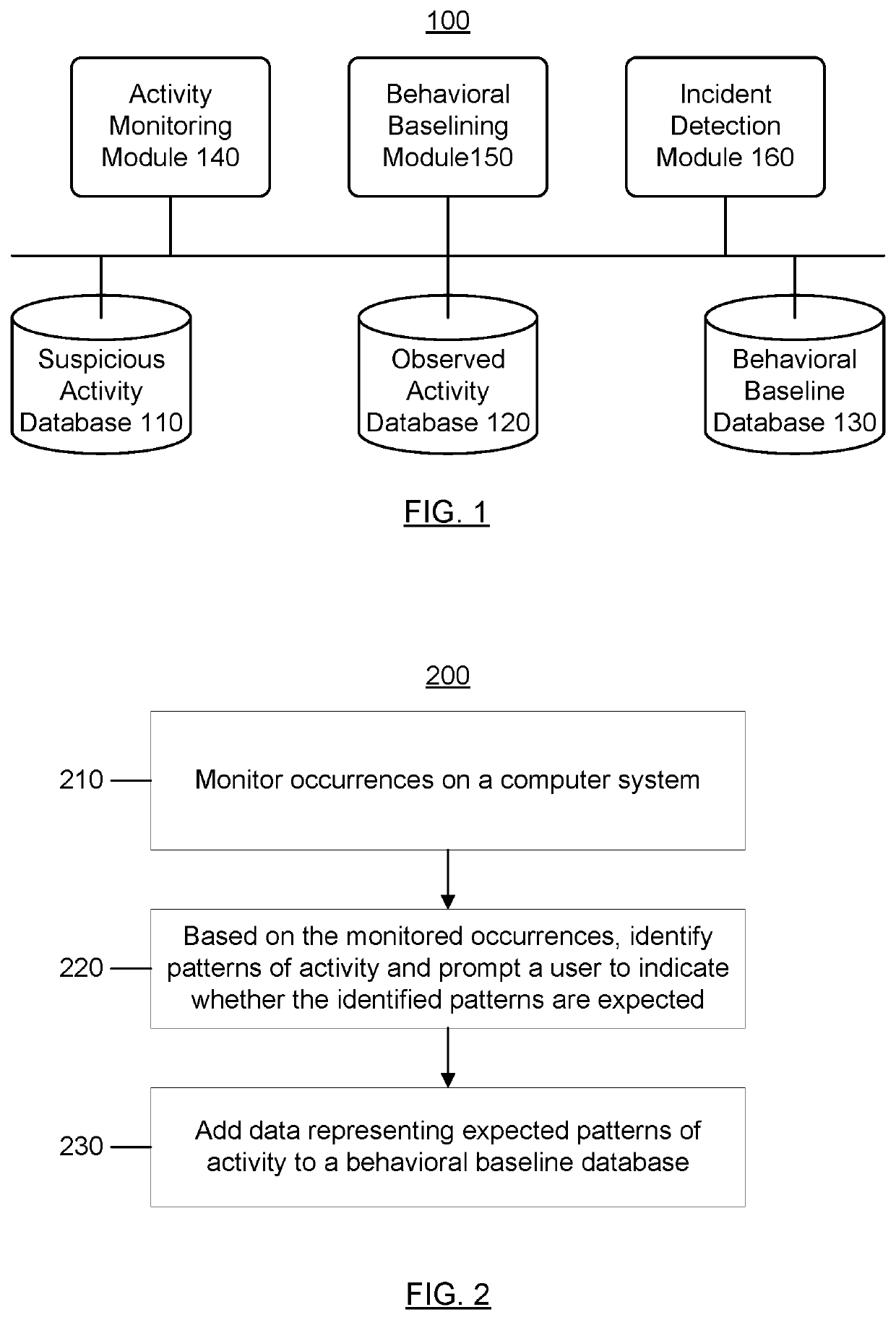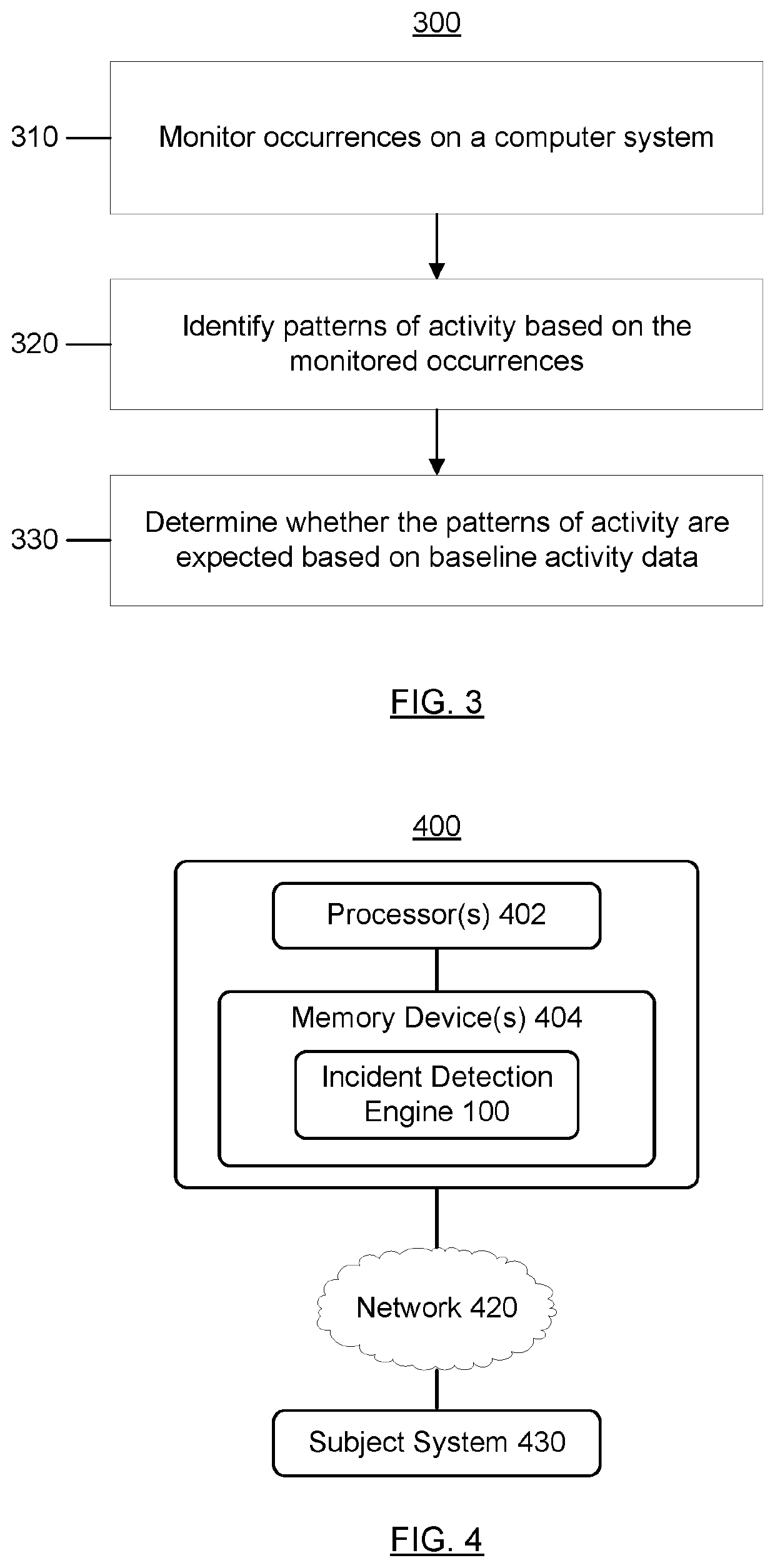Cybersecurity incident detection systems and techniques
a cyber-security and incident detection technology, applied in the field of cyber-security incident detection systems and techniques, can solve the problems of exposing the computer system to malicious attacks, identifying legitimate activities by detection engines that produce too many false positive outcomes, and ineffective detection engines, so as to reduce the rate of false positive outcomes of incident detection engines, save resources, and establish accurate behavioral baselines
- Summary
- Abstract
- Description
- Claims
- Application Information
AI Technical Summary
Benefits of technology
Problems solved by technology
Method used
Image
Examples
Embodiment Construction
Terms
[0031]The term “computer system,” as used herein, may include one or more computers and / or computer networks (e.g., a plurality of computers and one or more networks communicatively coupling those computers).
[0032]The term “security problem,” as used herein, may include an actual or suspected threat to or breach of the security of a computer system.
[0033]The term “occurrence,” as used herein, may include any operation performed by a computer system, activity observed on a computer system, etc. Some examples of occurrences may include loading a particular file (e.g., a particular binary file), executing a particular process, executing a particular application, accessing an address in a particular range of addresses in a memory space, accessing a particular registry entry in an operating system's registry, accessing a particular peripheral device of the computer system, communicating with a particular device (or a device at a particular address, or device(s) within a particular d...
PUM
 Login to View More
Login to View More Abstract
Description
Claims
Application Information
 Login to View More
Login to View More - R&D
- Intellectual Property
- Life Sciences
- Materials
- Tech Scout
- Unparalleled Data Quality
- Higher Quality Content
- 60% Fewer Hallucinations
Browse by: Latest US Patents, China's latest patents, Technical Efficacy Thesaurus, Application Domain, Technology Topic, Popular Technical Reports.
© 2025 PatSnap. All rights reserved.Legal|Privacy policy|Modern Slavery Act Transparency Statement|Sitemap|About US| Contact US: help@patsnap.com


